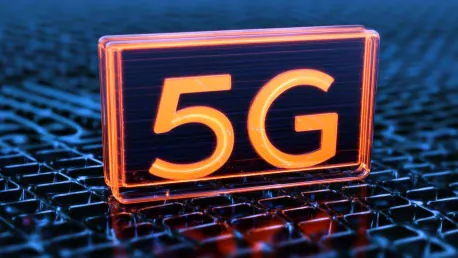As we look ahead to 2025, the telecommunications sector is gearing up for transformative advancements while simultaneously grappling with persistent challenges. These challenges threaten to reduce their role to “just another utility”. The year 2025 promises significant changes and innovations in AI-powered products and services, private networks, and enterprise solutions. Telecom operators are poised to capitalize on these opportunities, but they must also contend with increasing pressures on their networks, necessitating substantial investments in infrastructure, including cable systems and data centers. This comprehensive analysis will provide a detailed account of the anticipated developments in the telecom industry, offering a unified understanding from various expert viewpoints.
AI Regulation and Adoption
Regulatory measures, like the EU AI Act, will mandate transparency, data protection, and ethical AI usage within the telecom industry. While compliance might slow AI deployment, it will ultimately encourage broader acceptance and foster consumer trust. Telecom providers will likely adopt hybrid cloud strategies and targeted AI models to manage compliance risks. The goal will be to balance automation with oversight while securing user privacy.
AI’s proliferation within the telecom sector will be tempered by stringent regulations such as the EU AI Act, which prioritizes transparency, data protection, and ethical usage. This regulatory environment necessitates substantial investment in governance from telecom providers, potentially slowing AI deployment. However, these measures are expected to enhance consumer trust, encouraging broader adoption of AI-driven services over time.
To navigate this complex landscape, telecom companies may adopt hybrid cloud strategies and targeted AI models that balance automation with sufficient oversight and prioritize user privacy. This approach will help telecoms manage compliance risks while leveraging AI to improve operational efficiency and customer experience.
AI’s Impact on Customer Experience and Network Management
Advanced AI-driven chatbots and predictive intelligence will resolve customer issues more efficiently, reduce downtime, improve reliability, and enhance overall customer support. AI will automate network management tasks, such as traffic management, predictive maintenance, and real-time monitoring, leading to smarter infrastructures. Technologies like digital twins will simulate complex network scenarios for better service development and quicker time-to-market.
AI-powered chatbots and predictive intelligence systems will resolve customer issues swiftly, anticipate potential problems, and deliver proactive solutions. This automation will transcend customer service to include traffic management, predictive maintenance, and real-time network monitoring, thereby creating smarter, more responsive infrastructures capable of anticipating customer needs and seamlessly integrating AI enhancements to increase efficiency and service quality.
The integration of AI in network management for autonomous planning and design involves implementing predictive network optimization through AI and machine learning algorithms that analyze real-time data. Digital twins will play a critical role in simulating complex scenarios, testing, and optimizing configurations in virtual environments before actual implementation, setting new standards for industry efficiency and reliability.
Subsea Cables and Data Centers as Growth Drivers
Investments in submarine network capacity, especially in connectivity hubs like the Philippines and the Indo-Pacific region, will continue to rise. New regulatory landscapes, such as the Philippines’ Public Service Act, promote foreign investments, enhancing growth. Data centers in regions like Australia are expected to consume significant portions of national energy grids, which could lead to higher electricity costs. Consequently, tech companies may seek markets with sustainable energy access, potentially positioning Australia as a pivotal Indo-Pacific connectivity hub.
The continued investment in submarine network capacity and infrastructure, especially across key connectivity hubs such as the Philippines and the broader Indo-Pacific region, is crucial. The Philippines presents a favorable environment for foreign investment due to its evolving regulatory landscape. Concurrently, data centers in Australia are projected to consume a significant portion of national energy grids, potentially driving up electricity costs.
To mitigate this, tech companies may find themselves trading latency for sustainable energy access, potentially positioning Australia as a major Indo-Pacific connectivity hub. The importance of subsea cable maintenance is crucial to the resilience and security of global digital infrastructure. Anticipating a firmer policy approach from governments regarding subsea cable repair and maintenance across the supply chain is to be expected.
Industry Verticals and the Rise of IoT and Private 5G
The introduction of 5G will drive telecoms’ push into micro-industry verticals that cater to specialized niches. Enhanced edge computing capabilities will encourage industries such as healthcare, manufacturing, and smart cities to adopt private 5G networks. Technologies like IoT (Internet of Things) will evolve, with Wi-Fi 6, 7, and Wi-Fi HaLow playing crucial roles in managing large-scale connections. The decline of NB-IoT (Narrowband IoT) is also expected, with 5G RedCap offering an alternative solution in specific markets.
A surge in the adoption of specialized micro-industry verticals driven by 5G capabilities is anticipated. These verticals cater to precise niches within industries, necessitating sensors and automation designs powered by AI at the edge. This represents a significant business opportunity for telecommunications companies to explore investments in 5G and edge computing.
The decline of NB-IoT will see 5G RedCap rising as a competent alternative in certain markets, with LTE-M and 4G Cat-1 BIS as remaining connectivity options. As IoT technologies advance, Wi-Fi 6, 7, and Wi-Fi HaLow will be crucial in managing large-scale connections within industries. Enhanced edge computing capabilities will continue to drive the adoption of private 5G networks, particularly in healthcare, manufacturing, and smart cities, positioning telecoms at the forefront of these advancements.
Smart Cities and OpenRoaming
Municipalities and governments will expand public Wi-Fi networks to facilitate smart city initiatives. OpenRoaming will ensure seamless transitions between networks, enhancing connectivity for citizens and supporting smart infrastructure. As urban populations grow and cities become more connected, robust Wi-Fi networks will play a crucial role in providing reliable internet access, making cities more efficient and sustainable.
The expansion of public Wi-Fi networks and the implementation of OpenRoaming will enable seamless transitions between different networks, ensuring continuous and uninterrupted connectivity for users. This will be particularly important in smart cities, where various devices and sensors rely on constant internet access to function efficiently. Enhanced public Wi-Fi networks will also support essential services such as public safety, transportation, and healthcare, improving the overall quality of life for citizens.
OpenRoaming will simplify network management and foster data-rich urban environments, paving the way for the adoption of advanced technologies such as IoT, AI, and 5G. By ensuring seamless connectivity across different networks, smart cities will be better equipped to handle the growing demands of an increasingly connected population.
6G Development
Advanced AI-driven chatbots and predictive intelligence are revolutionizing customer support by resolving issues more efficiently, minimizing downtime, boosting reliability, and improving overall service quality. These AI technologies automate critical network management tasks such as traffic management, predictive maintenance, and real-time monitoring, thereby fostering smarter, more robust infrastructures. Additionally, digital twins simulate complex network scenarios, enhancing service development and accelerating time-to-market.
AI-powered chatbots and predictive intelligence systems address customer issues promptly, foresee potential problems, and offer proactive solutions. This automation extends beyond customer service to include traffic management, predictive maintenance, and continuous network monitoring. As a result, it creates more responsive infrastructures capable of anticipating needs and seamlessly integrating AI advancements to boost efficiency.
AI’s integration into network management for autonomous planning and design uses predictive network optimization through AI and machine learning algorithms analyzing real-time data. Digital twins are crucial for simulating complex scenarios, testing, and optimizing virtual configurations before actual implementation, setting new benchmarks for industry efficiency and reliability.









